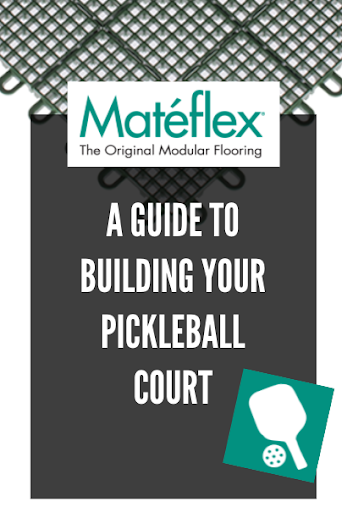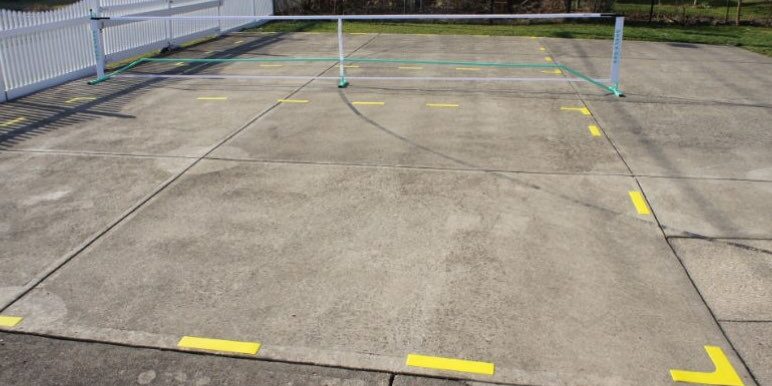Professional Pickleball Court Construction-- From Layout to Installation
Professional Pickleball Court Construction-- From Layout to Installation
Blog Article
Developing an Inclusive Environment: Easily Accessible Pickleball Court Design
The style of pickleball courts plays an important duty in promoting a comprehensive environment that fits gamers of all abilities. By prioritizing access via thoughtful layout principles, such as smooth surfaces and adaptive devices, we can dramatically boost participation and enjoyment for everyone involved. Involving with the neighborhood to gather feedback is crucial in guaranteeing that these facilities fulfill diverse requirements. The challenge lies not just in carrying out these layout attributes however also in recognizing the more comprehensive implications for neighborhood engagement and social inclusion. What strategies can be utilized to stabilize these complicated aspects properly?
Significance of Access in Sports
The value of availability in sporting activities can not be overemphasized, as it makes certain that individuals of all capacities can take part, compete, and appreciate exercises. Developing easily accessible sports settings is necessary for fostering inclusivity and advertising a feeling of belonging amongst diverse populations. When programs and centers are designed with ease of access in mind, obstacles are removed, enabling people with handicaps to involve completely in showing off tasks.
Accessibility in sports not only benefits individuals but likewise enhances the community in its entirety. It urges collaboration, breaks down preconception, and enhances social interaction among people with differing capabilities. In addition, easily accessible sports initiatives can motivate a wider audience to appreciate the value of physical task, bring about enhanced overall health and wellness and well-being in the area.
In addition, advertising availability lines up with lawful and ethical obligations to support the rights of people with disabilities. By prioritizing inclusivity, sporting activities companies demonstrate their dedication to equality and social obligation. Inevitably, easily accessible sporting activities settings produce opportunities for personal development, empowerment, and success, guaranteeing that all individuals can experience the joy and advantages of sporting activities participation.
Key Style Principles
Designing obtainable pickleball courts calls for cautious consideration of certain principles that promote inclusivity and functionality. The court design should permit for smooth navigation, featuring broad paths that fit mobility devices and movement gadgets. Pickleball court construction. The surface area product have to supply ample traction and shock absorption to decrease the danger of injury for all players, consisting of those with physical obstacles
Following, proper web elevations and post positionings should be standard, making sure that they are obtainable for gamers of varying abilities. Furthermore, the usage of contrasting shades for court lines enhances exposure, aiding players with visual problems in browsing the court effectively.
Furthermore, seats and resting locations ought to be integrated throughout the facility, giving sufficient area for individuals to rest without blocking activity pathways. Accessible restrooms and altering centers are likewise essential, making sure that all users have the essential features.

Adaptive Equipment Options
Various flexible devices options are offered to enhance the pickleball experience for players with varied capacities. These choices can dramatically boost ease of access, allowing every person to take part totally in the game.

For gamers with flexibility obstacles, adaptive sporting activities wheelchairs can be utilized. These wheelchairs are developed for dexterity on the court, including lightweight frames and progressed maneuverability to permit quick movements and quick turns.
Moreover, round retrievers can help players with restricted wheelchair in recovering rounds that are out of reach. These devices can be particularly helpful for individuals who may struggle to bend or reach down for the ball.

Court Format Considerations
Developing an easily accessible pickleball court needs mindful consideration of the design to ensure all players can navigate the room pleasantly and securely. A tactical court format focuses on the demands of people with different wheelchair challenges, ensuring equitable accessibility to the game.
First, the court dimensions must stick to standard policies while likewise permitting added room around the playing area. This buffer area fits gamers using wheelchairs or various other wheelchair aids, minimizing the threat of accidents and facilitating easy movement. Paths bring about the court has to be cost-free and large of barriers, with a firm, secure surface area that suits all users.
Additionally, the placement of seats and viewing locations is important (Pickleball court construction). These need to be placed to offer clear sightlines to the court without blocking pathways. Consideration needs to also be provided to the place of signage, which ought to be clear and simple to review, including braille alternatives for aesthetically damaged individuals
Area Engagement and Comments
Engaging the area in the advancement of accessible pickleball courts is necessary to make sure that the demands and choices of all potential individuals are efficiently satisfied. This process begins with outreach efforts that invite comments from diverse teams, consisting of individuals with specials needs, family members, and seniors. Carrying out studies, focus groups, and neighborhood meetings can provide important understandings right into specific ease of access difficulties and desired features of the courts.
In enhancement to gathering input, ongoing discussion cultivates a feeling of ownership among community members, encouraging them to promote for and utilize the facilities. Partnership with regional organizations and availability advocates can even more improve this interaction, guaranteeing that the design process straightens with best methods and criteria.
Moreover, integrating feedback loopholes right into the task enables for modifications based on real-world usage and user experiences. Post-implementation page analyses can determine areas for enhancement, making sure that the courts remain welcoming and easy to use in time. Ultimately, prioritizing neighborhood involvement not just improves the design procedure however also advertises a culture of inclusivity, making certain that obtainable pickleball courts offer as lively areas for entertainment and link this contact form for all individuals.
Verdict
In final thought, the facility of accessible pickleball courts is crucial for advertising inclusivity in sporting activities. By prioritizing thoughtful layout concepts, integrating flexible devices, and considering court design, centers can successfully accommodate individuals of all capabilities. Involving the neighborhood with responses makes certain that varied needs are fulfilled, cultivating an environment that encourages participation. Inevitably, such initiatives add to a more inclusive sporting activities culture, advertising a feeling of belonging for all participants in the sporting activity of pickleball.
The style of pickleball courts plays an important function in cultivating an inclusive setting that accommodates gamers of all capacities.Involving the neighborhood in the advancement of easily accessible pickleball courts is important to make certain that the demands and choices of all prospective users are efficiently satisfied. Inevitably, prioritizing neighborhood involvement not only improves the layout process but additionally advertises a culture of inclusivity, making certain that accessible pickleball courts offer as lively areas for entertainment and connection for all individuals.
In final thought, the facility of accessible pickleball courts is vital for advertising inclusivity in sporting activities. By focusing on thoughtful style concepts, incorporating flexible tools, and considering court layout, facilities can properly accommodate people of all abilities.
Report this page